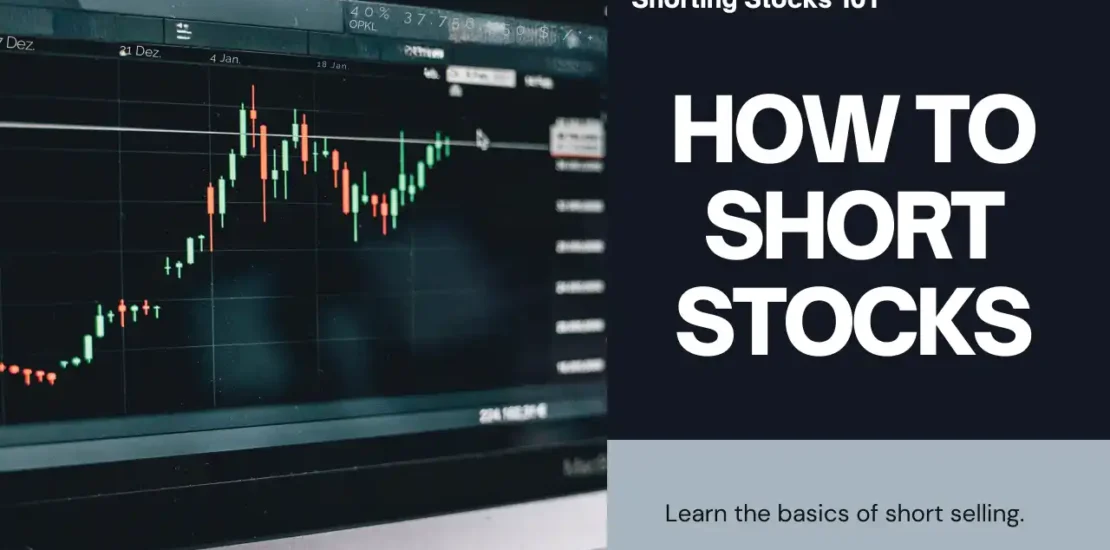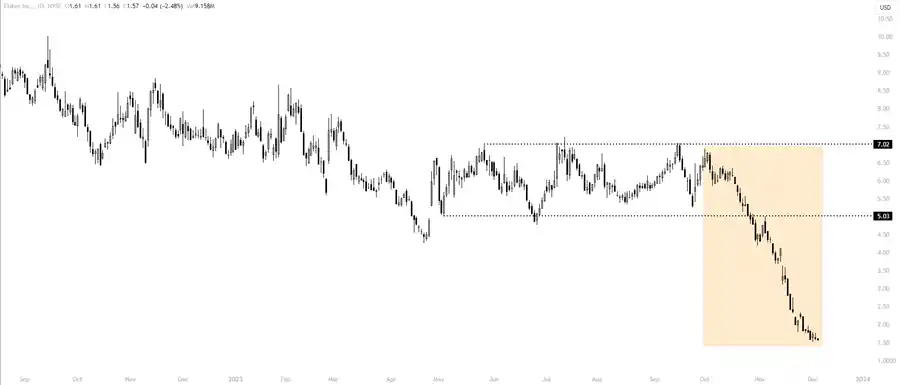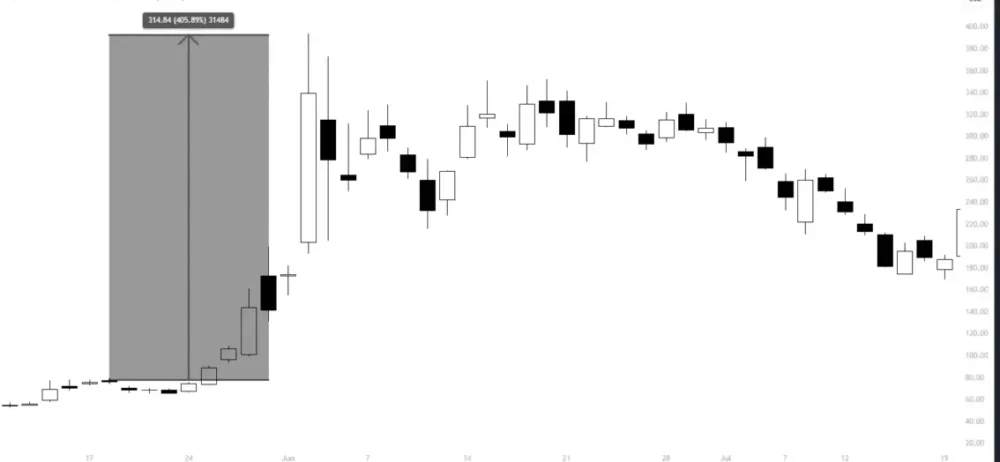- December 28, 2023
- Posted by: CoachShane
- Categories: Stock Trading, Trading Article

If you’re looking to take advantage of declining stock prices, then this strategy might just be the one for you. However, before diving into the world of short selling, you need to understand the key factors that can make or break your success. From selecting stocks with high short interest to carefully considering market sentiment and technical indicators (if part of your trading plan), research is a must. Do not forget the importance of understanding the risks involved and managing them through proper risk management techniques.
 Key Takeaways
Key Takeaways
- Short selling is a strategy used to profit from a decline in stock prices.
- Selecting stocks with high short interest and considering market sentiment and technical indicators is important.
- Thorough research and understanding of risks is crucial before shorting a stock.
- Margin accounts are necessary for short selling, and managing risks through proper risk management is essential.
Basics of Short Selling
Short selling is a strategy that can be used by beginners to potentially profit from a decline in stock prices. It involves borrowing and selling shares that you don’t own, with the hope of buying them back at a lower price in the future.
Let’s break down how it works:
- Borrowing shares: To start, you need to borrow shares from your broker. This allows you to sell them in the market. Your broker acts as the intermediary, facilitating this borrowing process.
- Selling shares: Once you have borrowed the shares, you can sell them at the current market price. This means you’re essentially betting that the price of the shares will go down.
- Waiting for the price to drop: After selling the shares, you wait for the price to drop. If the stock’s value decreases, you can potentially buy back the shares at a lower price.
- Buying back the shares: When the price has fallen to a level you’re comfortable with, you can repurchase the shares. This is known as ‘covering’ your short position.
- Returning the shares: Once you have bought back the shares, you return them to your broker. This completes the process of short selling.
- Profiting from the difference: The goal of short selling is to make a profit from the difference between the price at which you sold the shares and the price at which you bought them back. If the stock price drops significantly, you can earn a profit.
It’s important to note that short selling carries risks. If the price of the stock rises instead of falling, you may face potential losses. It is important that beginners thoroughly understand short selling and employ proper risk management techniques.
Selecting Stocks to Short
Now that you understand the basics of short selling, it’s important to know how to select the right stocks to short. This involves researching and identifying stocks that are likely to decline based on market signals and short interest.

This was the top 5 US stocks with the highest short interest in late November:
| Ticker | Company Name | Exchange | Short Interest |
|---|---|---|---|
| FFIE | Faraday Future Intelligent Ele | Nasdaq | 57.37% |
| NVAX | Novavax Inc | Nasdaq | 51.29% |
| EBIX | Ebix Inc | Nasdaq | 46.95% |
| FSR | Fisker Inc | NYSE | 44.89% |
| BYND | Beyond Meat Inc | Nasdaq | 43.83% |
High short interest can lead to short squeezes, so it’s crucial to be cautious and consider the risks associated with short selling.
Step-by-Step Guide to Shorting a Stock
If you’re interested in short-selling stocks, it’s essential to identify stocks that have a high probability of declining. By following these steps, you can improve your chances of selecting suitable stocks for shorting:
1/ Look for stocks with high short interest: One way to identify potential short candidates is by examining the short interest of a stock. Short interest refers to the number of shares that have been sold short by investors. When a stock has a high short interest, it suggests that many investors are betting against its performance, indicating a possible decline.
For example, if you come across a stock with a short interest of 44.89% as I did above (FSR), this means that 44.89% of the total shares available for trading have been sold short. Such a high short interest indicates a significant number of investors who believe the stock’s price will go down.
2/ Consider market sentiment: Analyzing market sentiment involves assessing the overall mood or attitude towards a stock. To evaluate market sentiment, you can look at various factors such as news, earnings reports, chart technicals, and the overall trend of the industry or sector.
For instance, if you discover negative news about a company, such as a product recall or a lawsuit against them, it could impact investor confidence and potentially lead to a decline in the stock price. Similarly, poor financial performance or a negative industry outlook could also contribute to a higher chance of a stock decline.
3/ Identify technical indicators: Technical indicators can provide insights into a stock’s potential downtrends or weakening price patterns. Some commonly used technical indicators include moving averages, support and resistance levels, RSI, and trend lines.
Let’s say you notice that a stock’s price has consistently been below its 50-day moving average. This indicates a potential downtrend, suggesting that the stock’s price might continue to decline shortly.
4/ Conduct fundamental analysis: Fundamental analysis involves examining a company’s financials, competitive position, and industry outlook. By evaluating these factors, you can gain a better understanding of a company’s overall health and potential for growth or decline.
For example, if you find that a company is facing significant challenges, such as declining sales or increasing debt, it may indicate a higher likelihood of the stock declining. Similarly, if the company operates in an industry with a negative outlook, it could also impact the stock’s performance. I don’t personally know many traders who look at the fundamentals of the company and prefer a more technical analysis approach.
Remember, before shorting a stock, thoroughly research and understand the risks involved. Short-selling can be a complex and risky strategy, so it’s important to approach it with caution.
Understanding Margin Accounts
When beginners engage in short-selling stocks, they need to understand the concept of margin accounts. A margin account is necessary for shorting stocks and involves borrowing funds from a brokerage to make the trade. To open a margin account, you must meet specific requirements set by the brokerage and provide cash or stock equity as collateral.
Shorting stocks using margin carries potential risks and requires careful management. You need to maintain enough equity in your account to serve as collateral and meet margin requirements for your short position. Let’s say you want to short a stock worth $100, and your brokerage requires a 50% margin. In this case, you’d need to have at least $50 in equity in your account.
It’s essential to be aware of the possibility of margin calls. These occur when brokers demand additional collateral or close your position if your losses become too high. For example, if the value of the stock you shorted rises significantly, you may receive a margin call asking you to deposit more funds or securities to cover potential losses. If you fail to meet the margin call, the brokerage may close your position and you could incur significant losses (they will close at market).
Managing Risks in Short Selling
When short selling, it’s crucial to have a true understanding of the associated risks. While short selling can be a profitable strategy, it isn’t without its potential demons, especially for beginners. To manage these risks, there are four important considerations to keep in mind:
| Risk | |
|---|---|
| Unlimited Losses | Short selling poses a risk of unlimited losses if the stock price sharply rises. Use stop-loss orders to automatically sell the stock at a set price to limit potential losses. |
| Margin Calls | When your losses in a short position become significant, your broker may issue margin calls. This means you must provide additional funds to cover potential losses or risk having your position forcibly closed. Ensure you monitor your positions and have sufficient funds to meet margin requirements. |
| Difficulty Borrowing | Short selling involves borrowing shares from a broker, but finding available shares to borrow can be challenging, particularly for less actively traded stocks. It’s crucial to have a plan in place, like working with a reliable broker with sufficient access to shares, to avoid being forced to close your short position prematurely, incurring additional costs, or missing profit opportunities. |
| Market Manipulation | Short sellers should be aware of the potential for market manipulation, where individuals or entities spread false information to drive down a company’s stock price, benefiting their short positions. To mitigate this risk, maintain constant vigilance over market conditions and adhere to strict trading discipline to avoid falling victim to manipulative tactics. |
Considerations for T+2 Settlements
To successfully engage in short selling as a beginner, it’s important to understand certain considerations related to T+2 settlements. In the stock market, T+2 settlements refer to the time it takes for stock transactions to be finalized, which is two business days. This means that if you decide to short a stock, you’ll need to close your position within this timeframe.
Closely monitor your position and ensure that you have enough funds available to meet the settlement requirements. Let’s say you shorted a stock on Monday. To avoid any issues, you’ll need to buy back the shares by Wednesday. If you fail to do so, you may face forced buy-ins, where your brokerage firm will automatically purchase the shares on your behalf to close out your position. This can lead to potential losses for the short seller.
If you’re trading on margin, there are additional considerations to keep in mind. Margin trading allows you to borrow funds from your brokerage firm to increase your buying power. However, you must fulfill the margin requirements and maintain sufficient equity to cover potential margin calls. A margin call occurs when the value of your account falls below a certain threshold, requiring you to add more funds to meet the minimum equity requirements.
Failing to meet a margin call can result in the liquidation of your position.
Dealing With Short Squeezes

When it comes to dealing with short squeezes in the market, it’s important to be prepared for sudden price increases in heavily shorted stocks. As a beginner, there are a few key points to keep in mind:
- Rising demand: Short squeezes happen when short sellers rush to cover their positions, causing an increase in demand for the stock. This sudden surge in demand can artificially spike the prices. For example, let’s say you’ve shorted a stock at $50 per share, but due to a short squeeze, the price jumps to $70 per share. This can lead to unexpected losses if you’re not prepared.
- Limited supply: Short squeezes are more commonly seen in stocks with a low float, meaning there’s a limited number of shares available for trading. This scarcity of shares can further drive up the stock’s price. For instance, if a company has a low float of only 1 million shares and there’s a sudden increase in demand, the price can skyrocket due to the limited supply available.
- Potential losses: As a short seller, you may find yourself in a challenging position during a short squeeze. If the stock price continues to rise, you’ll be forced to buy back the shares at higher prices to close your position. This can result in significant losses. For example, if you shorted 100 shares at $50 per share and are forced to buy them back at $70 per share, you’ll experience a loss of $2,000.
- Unpredictability: Short squeezes can occur unexpectedly due to market movements and investor behavior. It’s important to stay vigilant and closely monitor your positions to minimize potential losses. For instance, if you notice a sharp increase in trading volume and the stock price starts to rapidly climb, it could be an indication of a short squeeze. By paying attention to these signs, you can make more informed decisions.
Evaluating the Ethics of Short Selling
When we consider the ethics of short selling, it’s important to think about how it can affect the transparency and efficiency of the market. Short selling can contribute to market transparency by bringing to light information that may not be easily accessible elsewhere.
- Market manipulation – There are concerns that large short positions could be used by traders to intentionally drive down stock prices through smear campaigns, aggressive short attacks, and spreading false information. This manipulates the market and harms companies.
- Widening losses – Shorting a stock can accelerate its decline and worsen losses for regular investors holding the stock long term. This potentially grows systemic market risk.
- Skewing research – Short sellers may publish excessively negative analyses on stocks to generate more profitable outcomes in their positions. This can skew objectivity.
- Destabilizing confidence – Heavy short selling against a company can damage confidence in the company even if the business fundamentals are sound in the long run. This leads to volatility and economic costs.
However, ethical short sellers provide market liquidity, help with price discovery, expose corporate fraud or weakness, and balance overvalued stocks through trading activity.
Conclusion
Learning how to short stocks as a beginner trader can be a valuable skill and another trading approach for you. By considering factors such as borrowing availability, margin accounts, risk management, settlement periods, and the possibility of short squeezes, you can find success in this trading approach.

 Key Takeaways
Key Takeaways